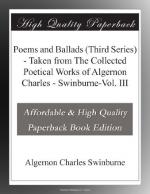|
This section contains 3,463 words (approx. 12 pages at 300 words per page) |

|
SOURCE: "The Art of Apostasy: Swinburne and the Emperor Julian," in Victorian Poetry, Vol. 28, No. 1, Spring, 1990, pp. 69-78.
In the following essay, Findlay explores Swinburne's attitude toward Christianity by examining his poems "The Hymn to Prosperpine" and "The Garden of Proserpine."
Apostasy in England in the nineteenth century gained special prominence in the wake of Keble's famous Assize sermon of 1833 on "National Apostasy," with its scathing analysis of those "omens and tokens" which mark the "fashionable liberality of this generation," the spread of indifferentism, and the loss of respect for the solemnity of oaths and the Apostolic status of Bishops. Earlier in the century, we find a more briskly sectarian understanding of the term as a means of berating paganism in, for example, Richard Shell's The Apostate: A Tragedy in Five Acts (1818), Sir Aubrey de Vere's Julian, The Apostate (1822), or H. H. Milman's The Fall of Jerusalem (1822). When...
|
This section contains 3,463 words (approx. 12 pages at 300 words per page) |

|


